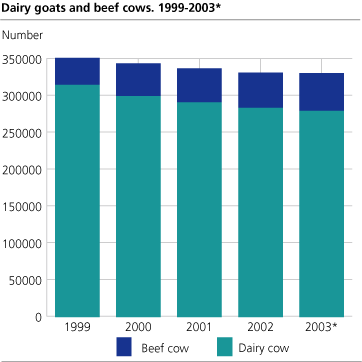Content
Published:
This is an archived release.
Increasing wheat area
The area of wheat increased from 633 000 decares in 2002 to 751 500 decares in 2003. This is the largest wheat area ever registered in Norway, and about 45 000 decares more than the last top year of 1993.
The total grain area of 2003 was of the same magnitude as the year before and covered 3.2 million decares. Increase in the areas of wheat and oats led to a decrease in the area of barley. Barley represented 49 per cent of the total grain area, while oats and wheat represented 26 and 23 per cent respectively. A total of 17 400 holdings grew grain and oil seeds in 2003.
The total area of agricultural area in use is somewhat lower than the corresponding area calculated from The Sample Survey of Agriculture and Forestry 2003 . The reason for this is that the sample survey also comprises units which do not apply for governmental subsidies.
The area of meadows for mowing and pastures decreased by 51 000 decares, and covered 6.43 million decares in 2003. Both fully cultivated and surface cultivated land decreased. 75 per cent of the area of meadows for mowing and pasture was fully cultivated.
The area of potatoes decreased from 151 200 decares in 2002 to 143 600 decares in 2003. In the same period, the area of oil seeds decreased with about 32 per cent to 75 000 decares.
More beef cows, fewer dairy cows
The number of beef cows is rising, while the number of dairy cows is decreasing. About 51 200 beef cows were recorded in 2003, an increase by 3 200 from the year before. The number of dairy cows has in the same period decreased with 4 000 to 277 500.
Tables:
Contact
-
Statistics Norway's Information Centre
E-mail: informasjon@ssb.no
tel.: (+47) 21 09 46 42


